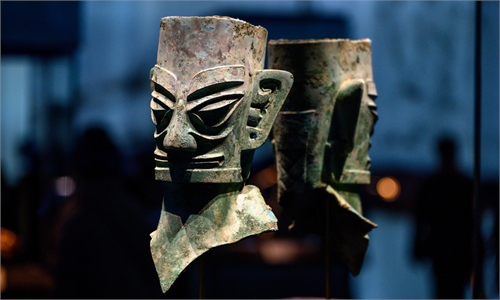ARTS / CULTURE & LEISURE
Ancient bronze chime bells unearthed for the first time in Suixian, Hubei

The Bianzhong of Marquis Yi of Zeng is pictured in Hubei Provincial Museum in Wuhan, central China's Hubei Province, April 17, 2025. Photo: Xinhua News Agency
A set of four bronze bianzhong (chime bells) dating from the late Western Zhou (1046BC-771BC) to early Spring and Autumn period (770BC-476BC) were recently discovered in Suixian county, Suizhou, Central China's Hubei Province, according to the local team conducting the fourth national cultural relics census. This marks the first time a complete set of chime bells has been found in the county since its establishment in 2009, according to local media outlet Hubei Daily.
"Bianzhong are a unique category of Chinese percussion instruments. The most famous set, discovered in 1978 in Suizhou, the Bianzhong of Marquis Yi of Zeng, is known for several records. It is the largest, the most complete in musical range, and the best preserved," Chen Libao, a traditional Chinese instrumentalist with the China National Traditional Orchestra, told the Global Times on Wednesday.
The bells discovered in 1978 not only offer insights into early Chinese musical traditions but also bear inscriptions that are considered the earliest surviving archaeological records illustrating mathematical relationships in music, according to the Xinhua News Agency. It has been inscribed to the UNESCO Memory of the World Register.
The discovery this time came to light in May when it was reported that a local villager, surnamed Zhang, had unearthed four bronze artifacts while tilling his fields in 2023. The local relics team confirmed the items to be four bronze chime bells, which were then collected and transferred to the local museum, according to the Hubei Daily.
Following the confirmation, the relics team conducted a field investigation and excavation at the site in Tongqiaofan village, Huaihe Town, where the bells were found. Based on surface sampling and stratigraphic drilling, the site was preliminarily identified as a settlement dating from the Neolithic period (7000BC-1700BC) to the Zhou Dynasty (1046BC-256BC). It has since been officially registered as a newly discovered site under the fourth national census of cultural relics.
Arranged in a tiered sequence, the four bronze chime bells are similar in form but vary in size. The largest bell stands 47 centimeters tall, with a shoulder width of 24 centimeters and a midsection width of 19 centimeters.
Each bell features a narrow top and wider base. The bell walls are evenly cast without noticeable sound ribs or grooves. The upper rim and ridges of the shoulder lack decorative patterns.
The seal bands are decorated with motifs, while the center of the bell is embellished with symmetrical "I"-shaped patterns. Two clan emblems are cast on the upper rear section of the bell.
Experts noted that while the form of this bell set differs significantly from the well-known bells of the Zeng State unearthed in Suizhou, they closely resemble the "Chu Ji" bell set discovered in 2012 in Yichang.
This discovery provides valuable new material evidence and clues for the study of pre-Qin history and the evolution of ancient Chinese ritual and musical systems, further conservation and research at the site are ongoing, according to Suizhou Daily.
"For a traditional Chinese instrumentalist, bianzhong holds another title. It's often considered a musical textbook for percussion," Chen said.
Chen recalled that during a concert in 2024, an orchestra performed with a reconstructed set of bianzhong, accompanied by stone chimes (qing).
"The powerful harmony of bells and chimes transported the audience through time, evoking the grandeur of ancient Chinese civilization. It conveys a truly breathtaking experience," he said.



